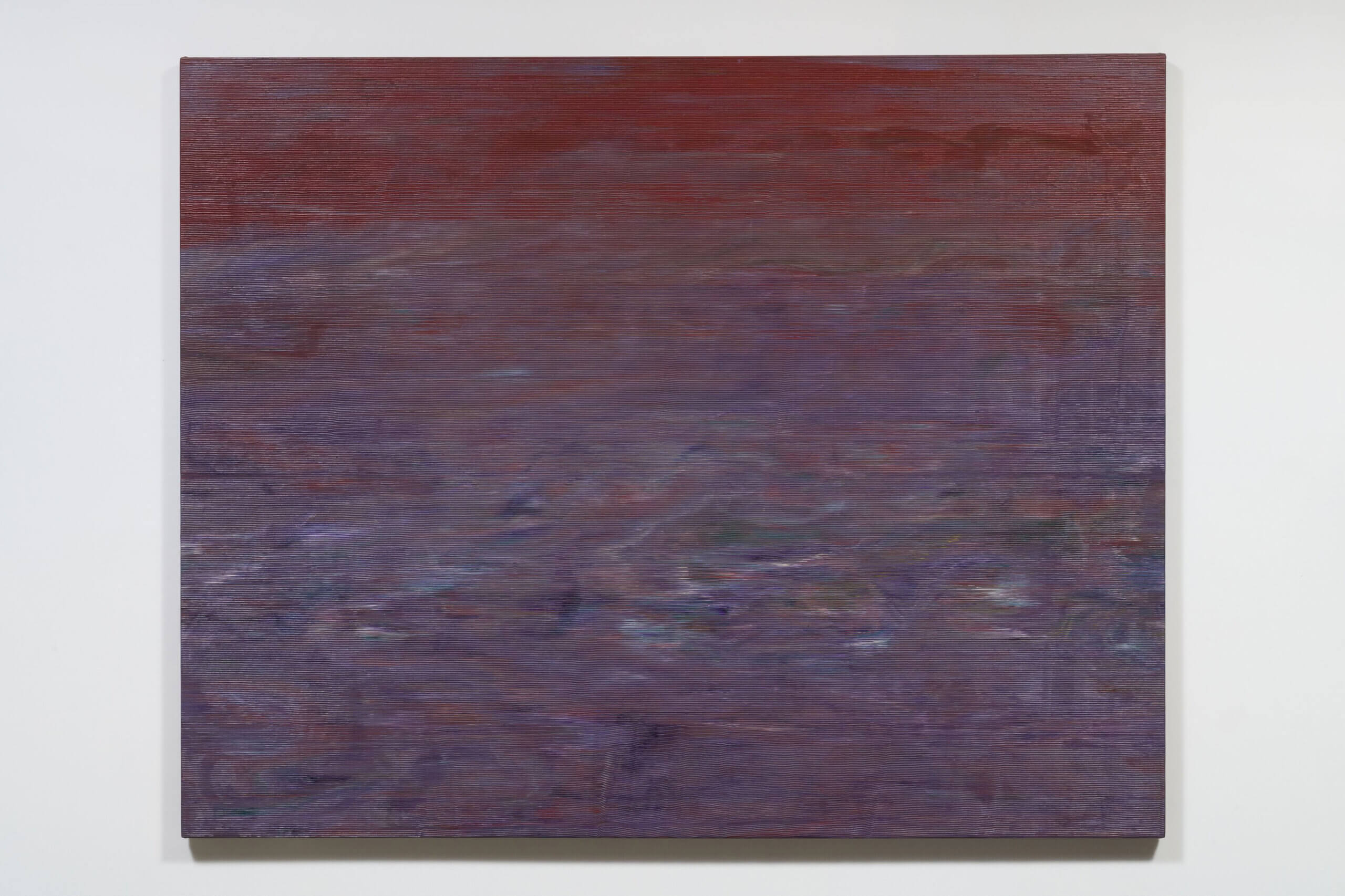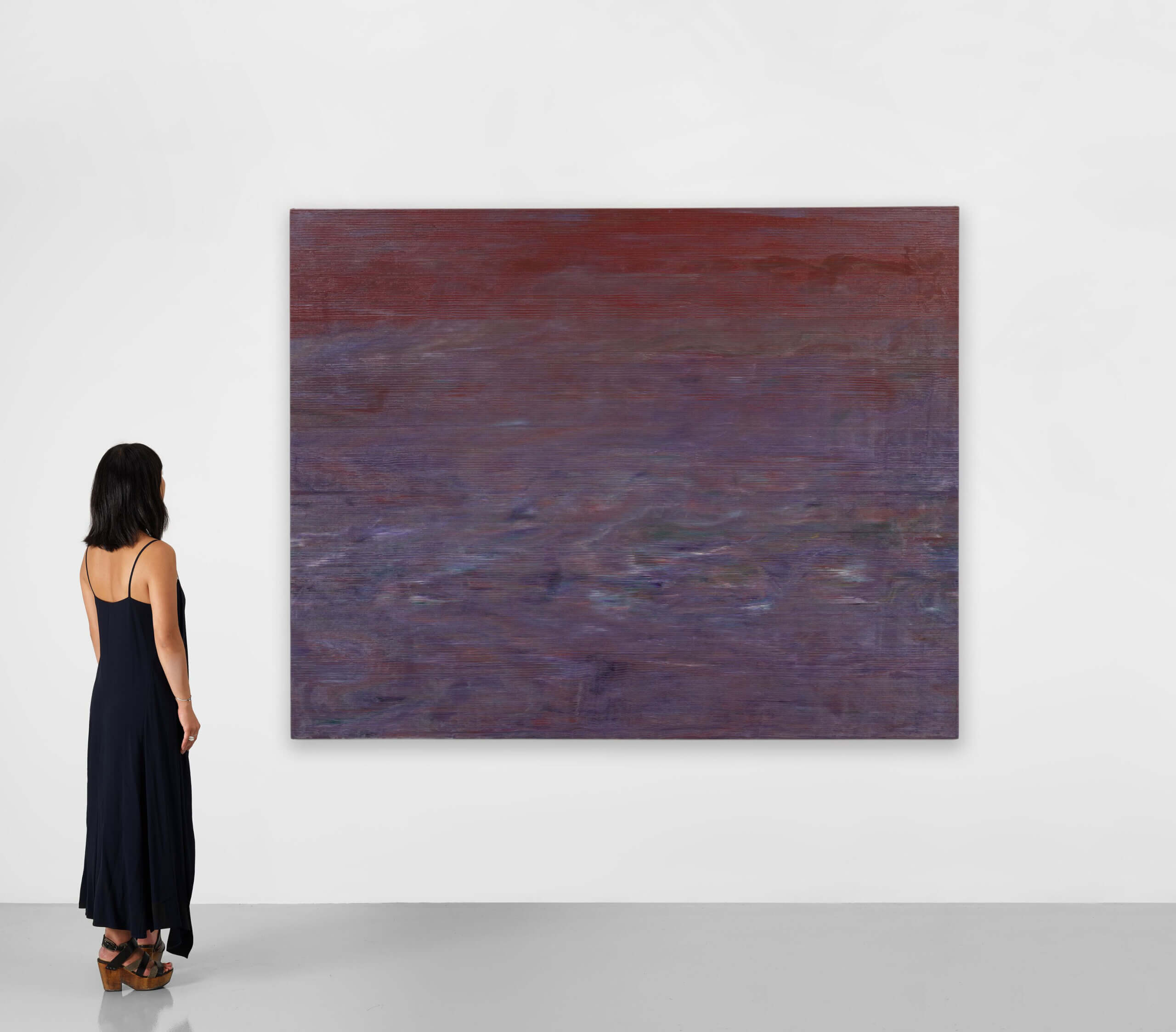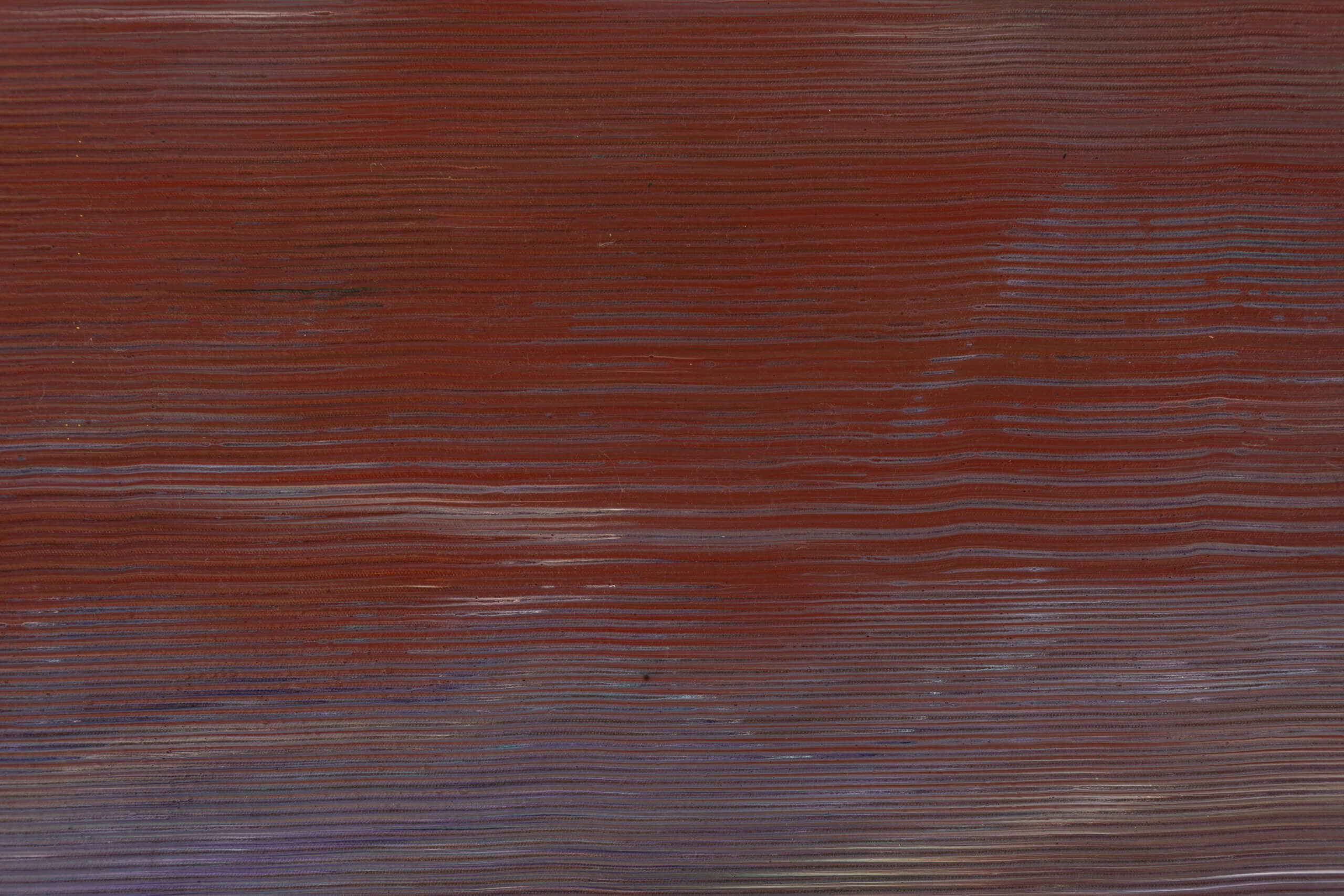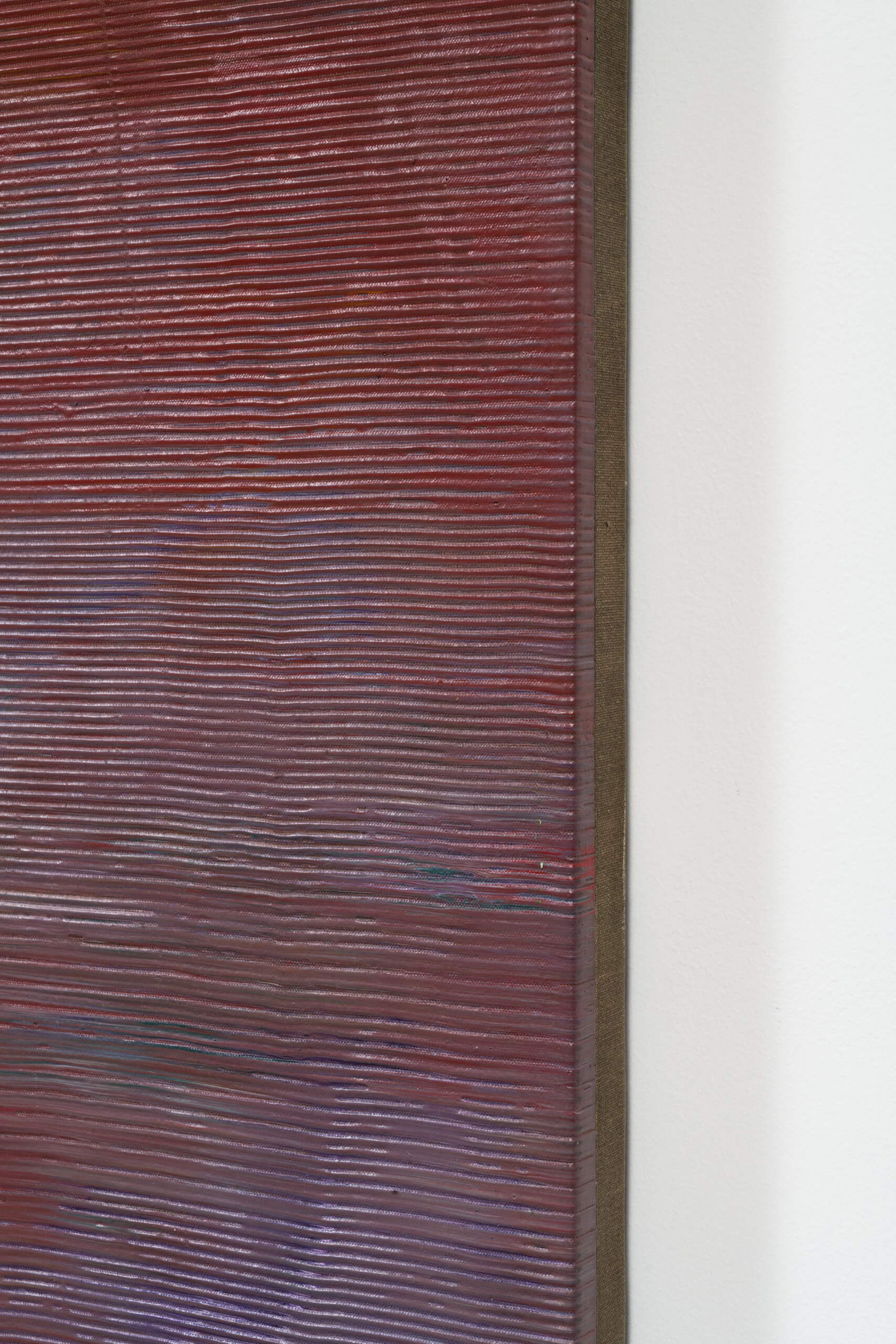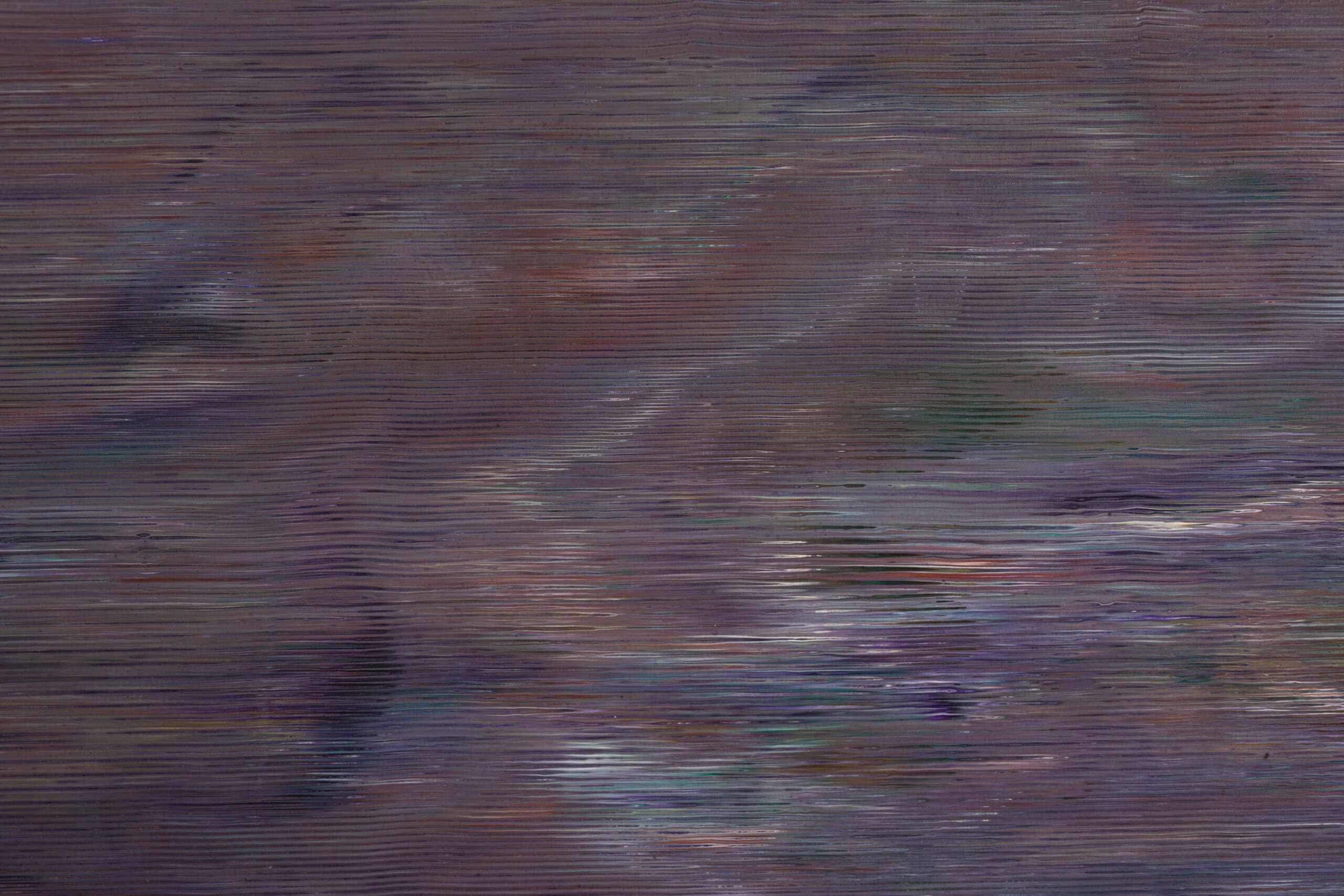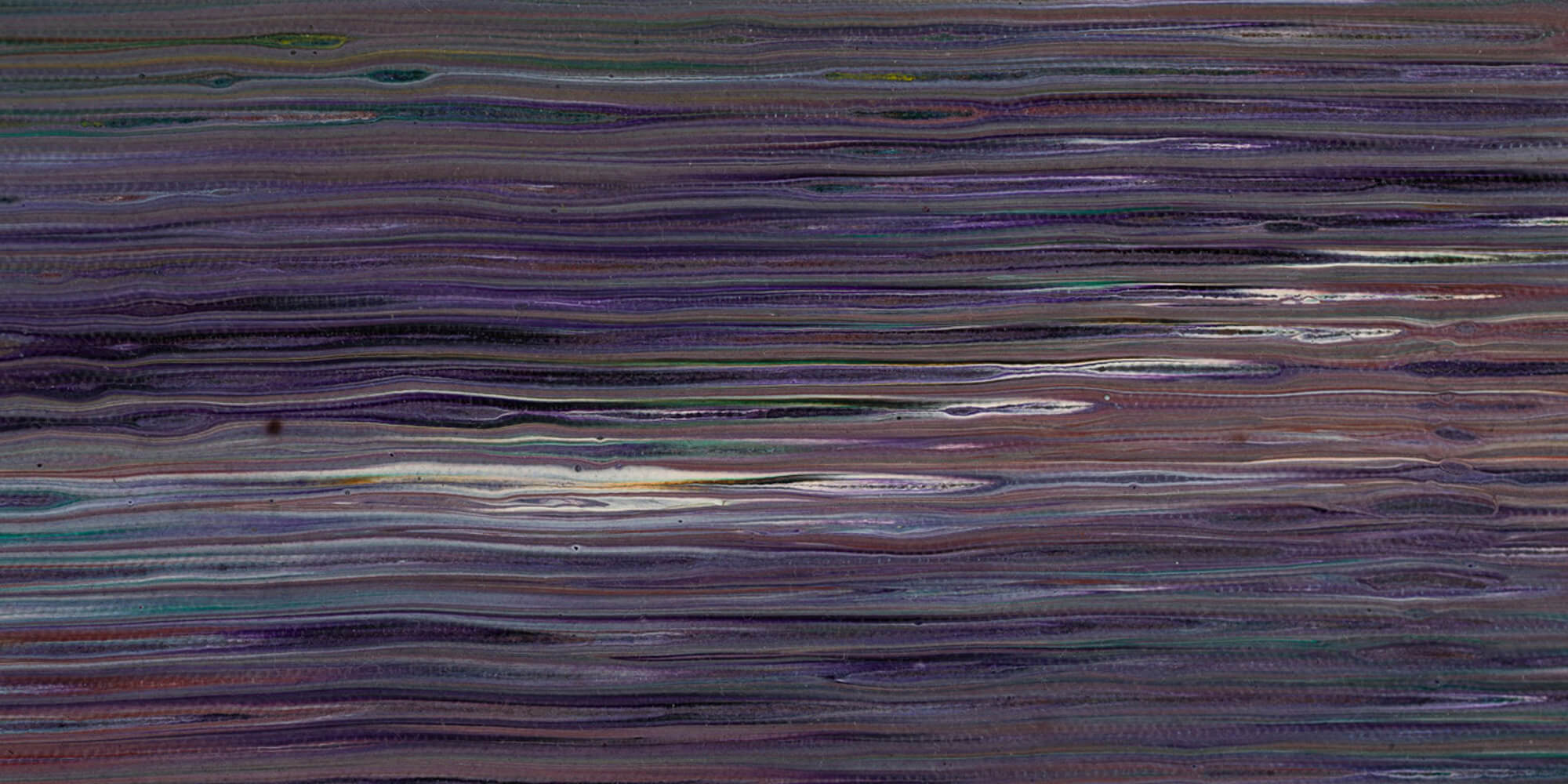
Jack Whitten
Russian Speedway
Russian Speedway
1971 Oil on canvas 162.6 x 205.7 cm / 64 x 81 in
Painted in 1971 – a breakthrough moment of Whitten’s illustrious practice – ‘Russian Speedway’ is an outstanding example of the artist’s ceaseless experimentation with the materiality of paint. The work is highly textural in composition and emotive in color: crimson red fades into deep purple, as perpendicular lines traverse the canvas, revealing turquoise and emerald tones underneath. It is at once striking and serene, dynamic yet balanced, revealing Whitten’s ingenuity and mastery of his medium.
'I am enjoying the use of oil-paint. It is so much more sensuous than acrylic could ever be. The oil feels more like something of the skin – more organic .... it slows everything down [and] I am not so frantic and racing against the medium.'—Jack Whitten
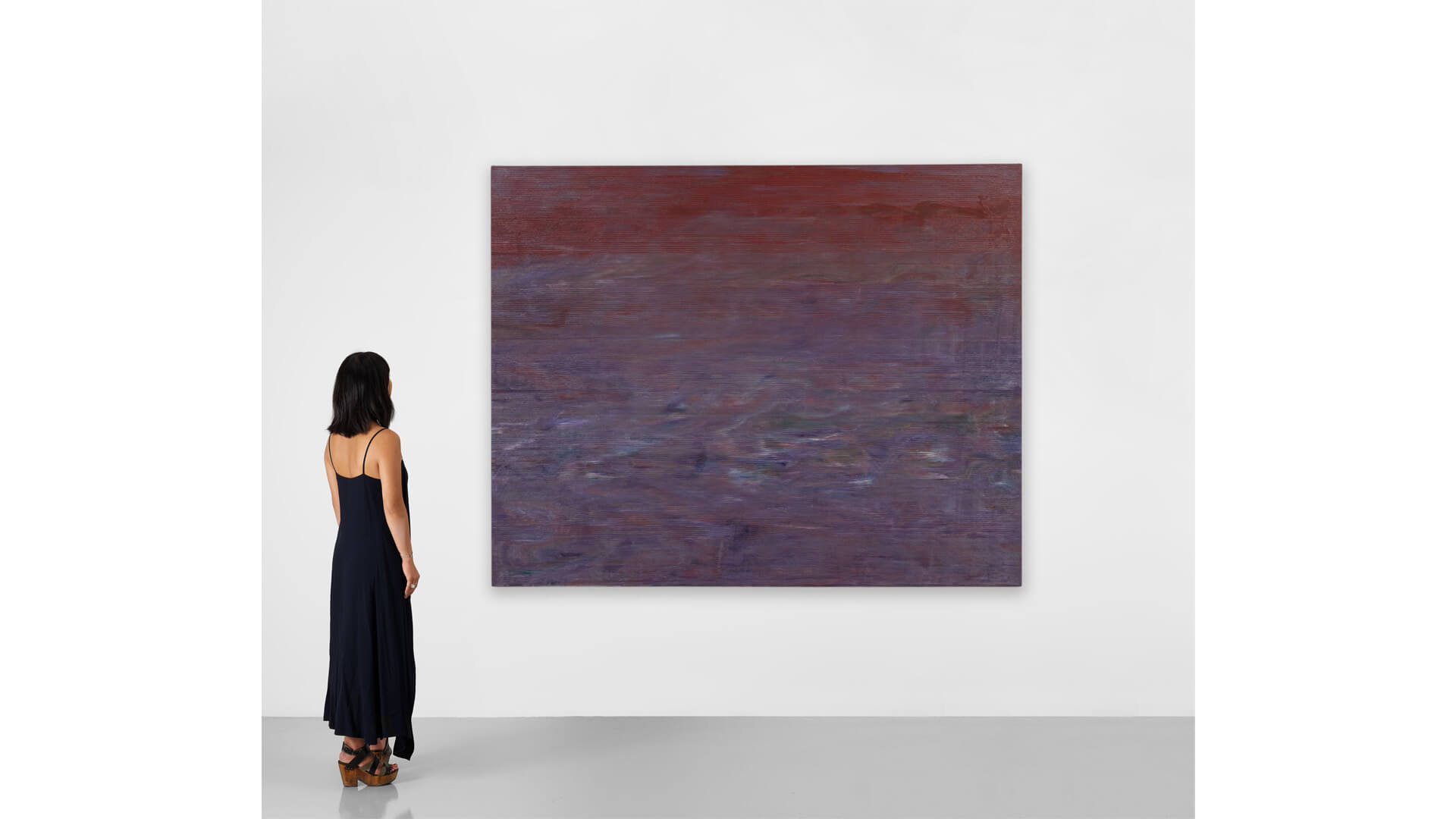
In the early 1970s, Whitten redefined his practice, moving away from the dynamic fervor of Abstract Expressionism towards a visual rhetoric that was uniquely his own. He improvised a T-shaped tool – a ‘developer’ – to quickly spread a layer of paint in a single broad gesture, resulting in his signature ‘Slab’ paintings. Traditionally, Whitten used acrylic paint to create these works; however, ‘Russian Speedway’ is unique in that it is executed in oil paint.

Nebulous in appearance, the work is akin to a still-photograph taken at terrific speed – and as the title suggests – a rush of blurred vision from a vehicle. Here, the horizontal lines resonate with the tracks of a speedway racetrack, where motorcycles with only one gear and no breaks would race on a flat oval track usually consisting of dirt, loosely packed shale, or crushed rock. The dust from the track would rise as the motorists passed, blurring the vision of spectators, which Whitten ingeniously captures in ‘Russian Speedway’.
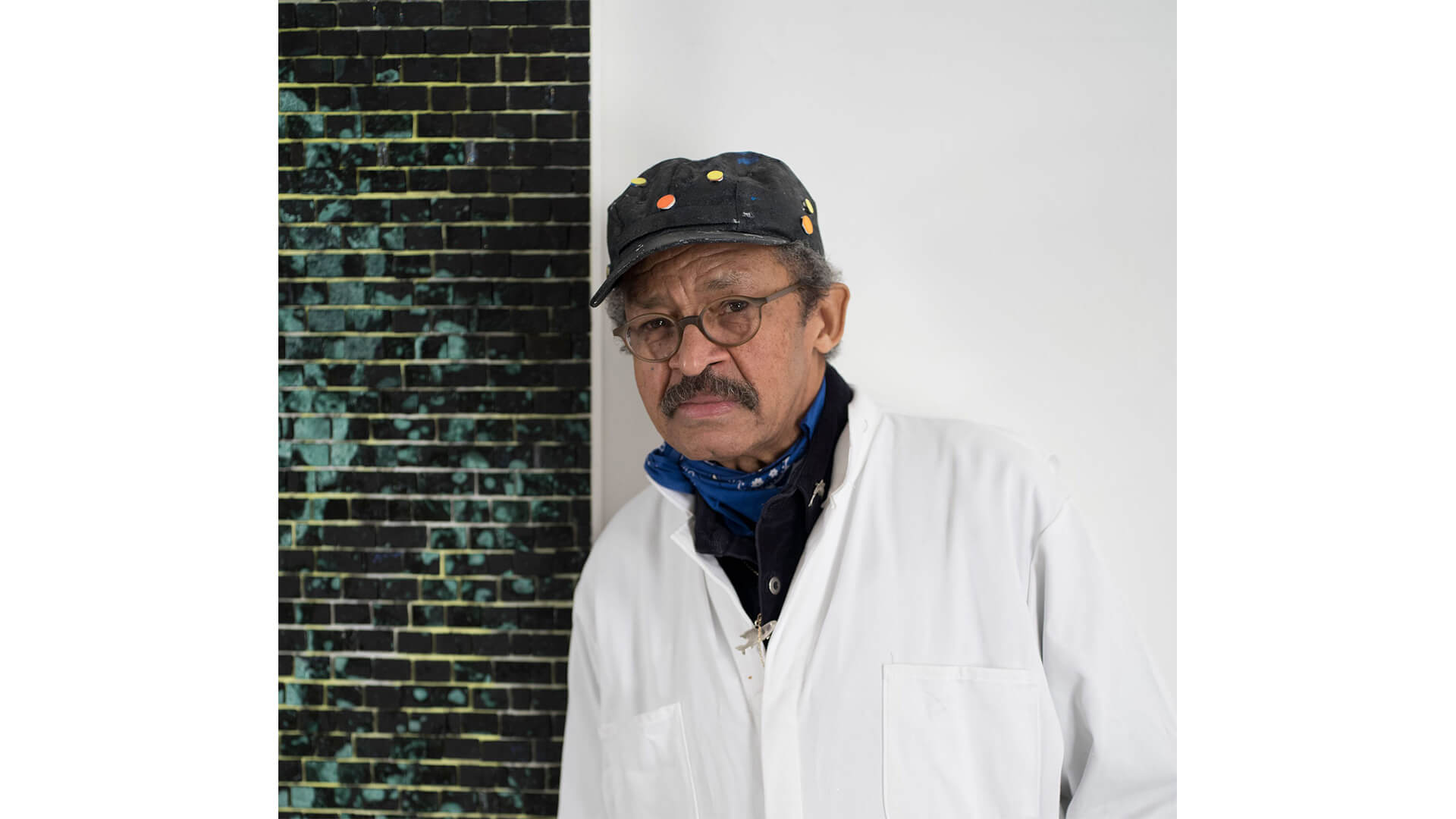
Jack Whitten
Born in Bessemer, Alabama in 1939, Jack Whitten is celebrated for his innovative processes of applying paint to the surface of his canvases and transfiguring their material terrains. Although Whitten initially aligned with the New York circle of abstract expressionists active in the 1960s, his work gradually distanced from the movement’s aesthetic philosophy and formal concerns, focusing more intensely on the experimental aspects of process and technique that came to define his practice.

